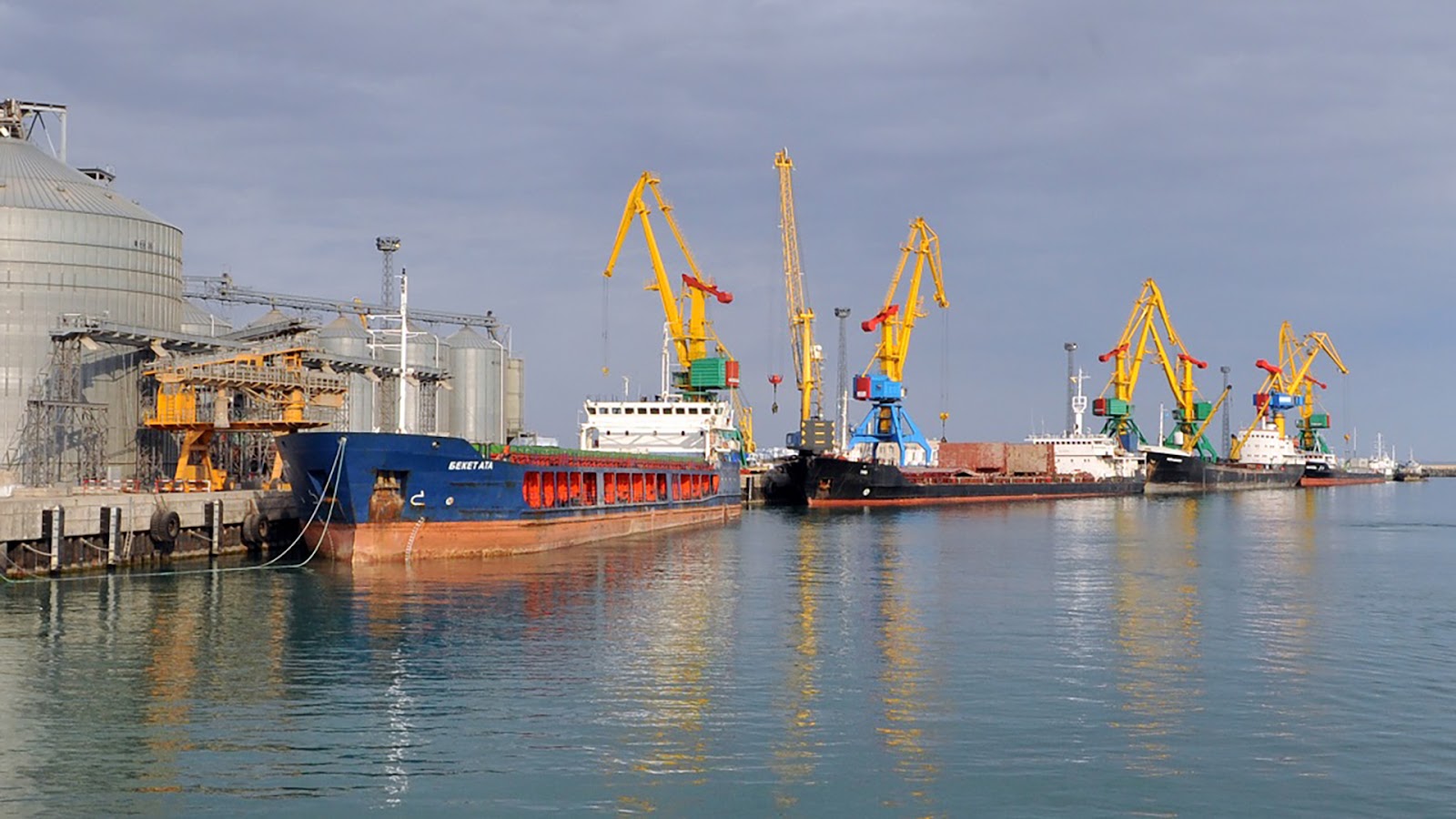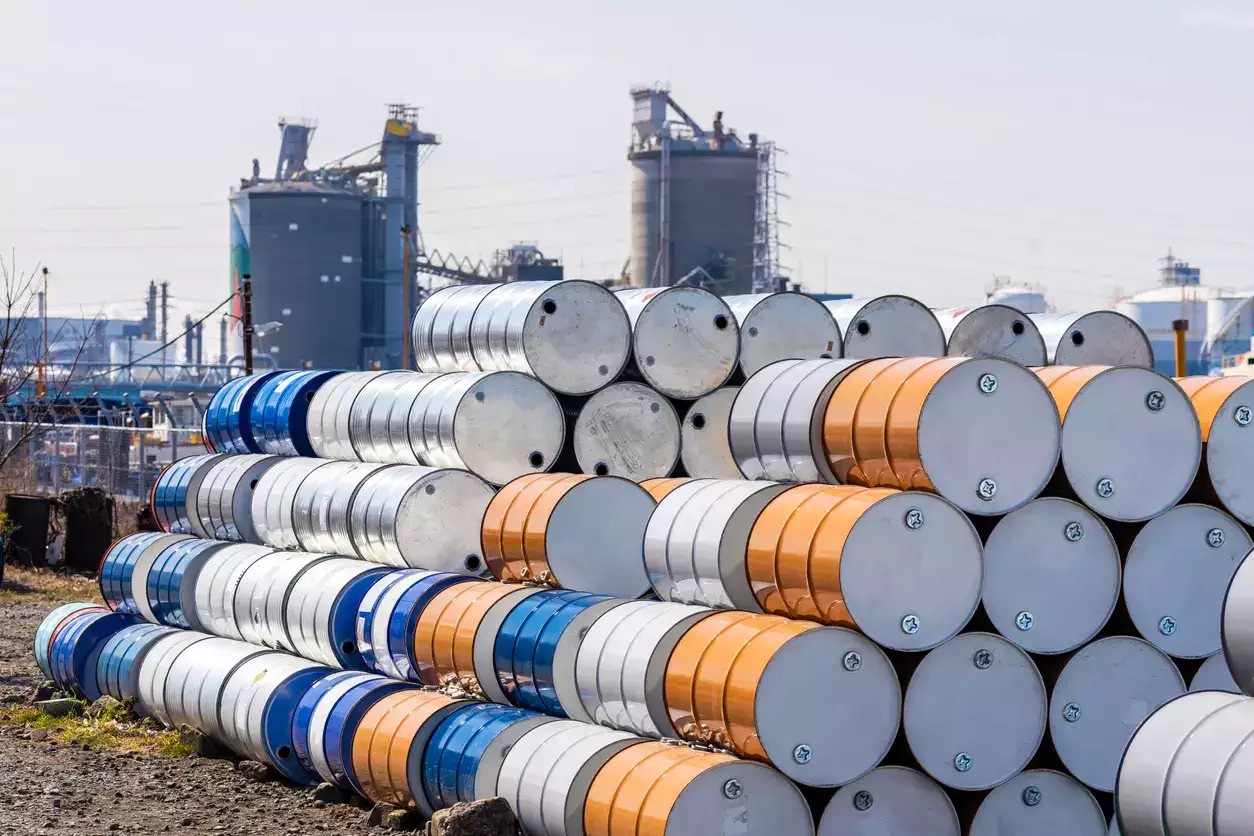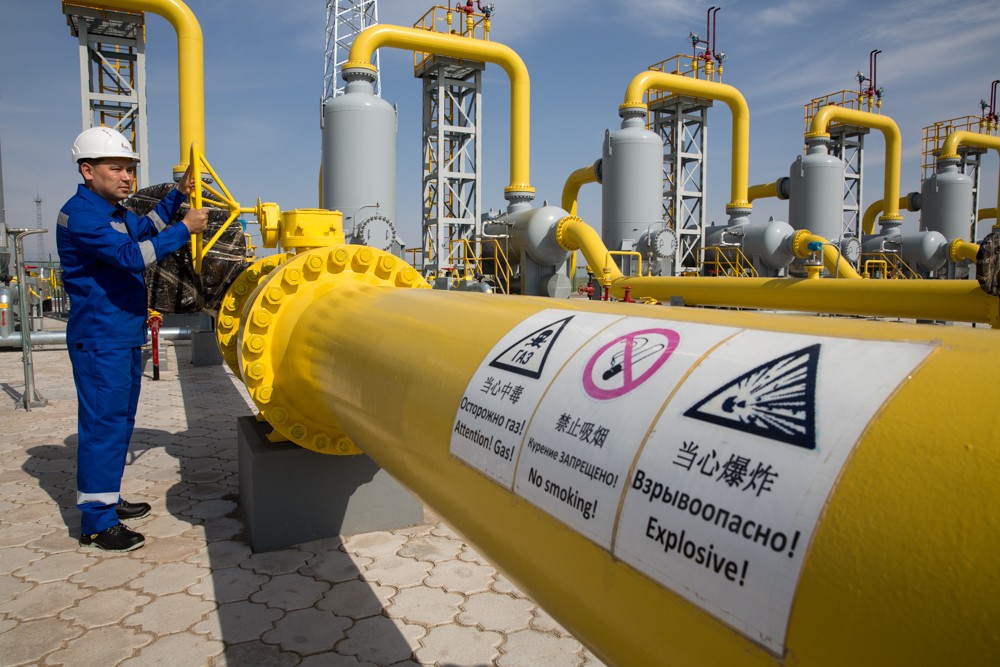ASTANA – Kazakhstan plans to diversify its oil supplies and work out alternative routes for delivery of goods in line with President Kassym-Jomart Tokayev’s instructions outlined at a meeting with the government, relevant ministries, departments, and national companies involved in developing the country’s transport and transit potential.

Photo credit: primeminister.kz.
In a recent interview with Zakon.kz, Lidiya Parkhomchik, expert at the Institute of World Economics and Politics (IWEP), said the challenge of finding alternative oil export directions is back on Kazakhstan’s agenda, as the hydrocarbon export model has several vulnerabilities.
“According to the Ministry of Energy’s 2022 data, 64.3 million tons of oil, which is approximately 93.9 percent of all exported oil from Kazakhstan, was exported in the direction of Russia. Approximately 52 million tons was transported through the Caspian Pipeline Consortium (CPC) (80.8 percent), and 8.4 million tons (13.1 percent) through the Atyrau-Samara pipeline,” she said.
Exports also travel along the Kazakhstan-China pipeline system, the Caspian Sea, and the rail route to Uzbekistan. However, export volumes need improvement in this direction, according to the expert.
Last year, 2.3 million tons of oil was shipped through the Aktau port and approximately 1.2 million tons through the Atasu-Alashankou oil pipeline. Only 0.4 million tons of oil was transported by rail.
Commenting on the suspension of oil pumping by the CPC due to a breakdown of remote mooring devices at the terminal in Novorossiysk in Russia, Parkhomchik believes this demonstrated the challenge of redirecting such significant volumes of raw materials on an emergency basis. According to the Energy Ministry, Kazakhstan can export only 16.5 million tons of oil annually circumventing the CPC under the current conditions.
“Given the increased geopolitical turbulence around Russia, finding alternative options for Kazakhstan’s oil exports continues to be relevant,” Parkhomchik said.
Caspian direction
Oil transportation along the trans-Caspian route is the most promising option for redirecting oil flows. In July 2022, President Tokayev urged KazMunayGas, the state-owned oil and gas company of Kazakhstan, to explore opportunities for expanding export supplies through the Caspian Sea.

Photo credit: caspiannews.com.
As a result, KazMunayGas and Azerbaijani oil and gas company SOCAR agreed on the supply of up to 1.5 million tons of oil per year to the Sangachal terminal with subsequent pumping through the Baku-Tbilisi-Ceyhan (BTC) pipeline. According to Reuters estimates, KazMunayGas will supply up to 120,000 tons of oil from the Tengiz field through the BTC starting from February.
In addition, Tengizchevroil, a joint venture between Chevron, ExxonMobil, KazMunayGas and LukArco, began supplying raw materials to the Batumi oil terminal in Georgia. In January, 82,500 tons of Tengiz oil were transported to the Batumi port via multimodal logistics. As a result, monthly deliveries of Tengiz oil to the Georgian terminal can reach up to 100,000 tons.
This year, oil exports via the Aktau-Baku route will be increased to 3.5 million tons. At the same time, there is potential to ramp up exports to 20 million tons from the Aktau port.
In the medium term, the amount of Kazakh oil being delivered through the BTC can be increased to 5 million tons per year. An additional 5 million tons could be redirected through the Baku-Supsa oil pipeline to Georgia. In comparison, deliveries by rail from Baku to Batumi could also be increased to 5 million tons per year. In the long term, there is also the possibility of resuming swap oil supplies of up to 5 million tons annually through Iran.
Lidiya Parkhomchik stressed that to implement these plans, it will be necessary to launch a large-scale program to modernize port facilities in the Caspian Sea.
Firstly, the oil loading capacity of the Aktau port should be increased from the current 12 million tons.
Secondly, the tanker fleet should be restored. Due to the lack of oil volumes for transportation, Kazmortransflot was forced to reduce tankers such as the Caspian max from six to three ships. More will be required to transport additional volumes.
Thirdly, a construction project to build an oil pipeline connecting the Tengiz field to oil terminals should be implemented.
Fourthly, dredging works should be carried out at the Aktau port to increase the tonnage of the served vessels.
“Kazakhstan needs to synchronize its work with Azerbaijan to fully launch the sea route. As such, the Baku port will also need to expand the receiving capacity of its oil terminals, in parallel with the Aktau port.”
According to shipping company Kazmortransflot, the maximum load of the trans-Caspian oil corridor is currently 5.2 million tons. This takes into account the state of the Aktau port transshipment capacity, the receiving capacity of the port infrastructure in Azerbaijan and Georgia, and the railway line workload to Batumi.
The Kazakh authorities must guarantee a stable increase in oil supply to its Caspian Sea partners, according to the expert.
“A long-term contract with Tengizchevroil for the supply of hydrocarbons in the direction of Baku would enable the expansion of the port infrastructure. The Tengiz expansion project is expected to be launched from July 2024, which would increase production by 12 million tons of oil per year. In addition, these volumes may be contracted for sea shipment,” she said.
Additional transportation volumes will appear by 2030. The production at the Kashagan field will then double. The offshore fields of Kalamkas-Sea, Khazar, Auezov, and Zhenis, a development started by KazMunayGas and Russia’s Lukoil, can also become a resource base for the route.
Chinese direction
An alternative export route is the Kazakh-Chinese pipeline (KCP), which consists of two main oil pipelines – Kenkiyak – Kumkol and Atasu – Alashankou. Up to 20 million tons of oil per year can be transported through this pipeline system.

Photo credit: Kapital.kz.
“However, for full-scale export of Kazakh raw materials from the country’s western fields to China, it is necessary to eliminate bottlenecks. Only the final section of the Atasu-Alashankou oil pipeline has a 20 million tons of oil per year production capacity. On the Kenkiyak-Kumkol route, deliveries are still limited to a capacity of 10 million tons,” Parkhomchik said.
In addition to the problem of limited capacities, the pipeline is also used for Russian oil. Under the 2017 agreement, Rosneft will use the pipeline’s capacity to deliver 10 million tons of oil to China. In 2022, the parties agreed to extend supplies for the next ten years.
The expert believes that the Kazakh side can only supply 9 million tons of oil to the Chinese market in the medium term.
“Supply growth to China will give rise to new challenges to increase the capacity of the Kenkiyak-Kumkol main oil pipeline to the projected 20 million tons annually and expand the throughput capacity of the Atyrau-Kenkiyak pipeline operating in reverse mode.”
To start work on modernizing the oil infrastructure, Kazakhstan must be confident in the long-term intentions of Beijing to import hydrocarbons through the pipeline. This is explained by the fact that only one buyer enters the market when oil is delivered to the east, and China will try to negotiate preferential terms for itself.
“Therefore, before the full use of the KCP pipeline system as an alternative export route, it is necessary to update the existing agreements on the supply of Kazakh oil to China,” she said.
According to the plans of the Kazakh Energy Ministry, the total oil export in 2023 will amount to 71 million tons, of which 66.1 million tons (93 percent) will be transported via Russian routes.
An increase up to 3.5 million tons is expected only on the Aktau-Baku route, while export volumes will remain at the same level as last year in other areas.
“This year will be used as preparation before the possible launch of the so-called diversified routes. Kazakhstan should have a hydrocarbon ‘surplus’ that will be redirected along alternative supply corridors,” she said.
At the same time, the expert believes Astana should be convinced of its partners’ intentions and technical readiness to accept additional oil volumes into their oil pipeline systems before expanding oil production.
The article was originally published in Zakon.kz website.


